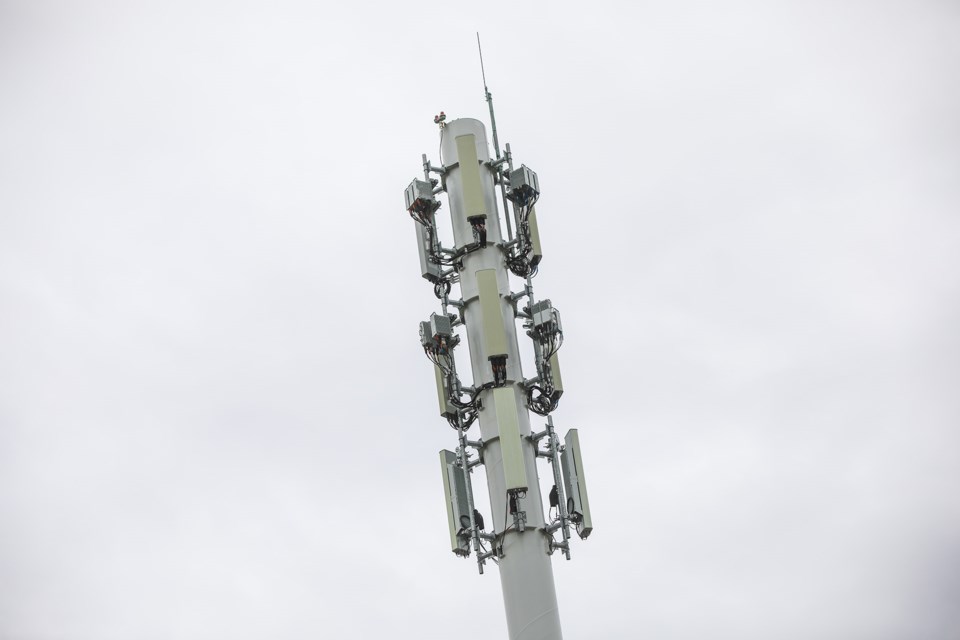After notice was given for an open house regarding the installation of a new cellphone tower near an Okotoks school, community concern regarding the health effects has been reignited.
Rogers Communications and the Town will hold an open house July 25 from 5 p.m. to 7 p.m. at the Foothills Centennial Centre to discuss the proposed tower near Westmount School, at 200 Southridge Drive.
Colin Gainer, senior planner for the Town and file manager for the tower application, said the open house is part of the Town’s regulatory protocols before the Westmount tower can proceed.
“It’s really a question of support or non-support, because the Town’s not the approving authority,” said Gainer. “The approving authority for telecommunication towers rests with Industry Canada because it’s a federally regulated industry.”
The Town’s scope for support or non-support is limited to the design and configuration of the site, said Gainer.
According to Rogers, the tower will provide 4G LTE service for the area.
“The proposed tower will allow us to provide much better service for residents, businesses, schools, government agencies and emergency first responders in the south Okotoks area,” said Rogers in a statement regarding the tower. “We welcome conversations with the community to ensure our services, equipment and design meet their needs.”
Further, Rogers said “the health and safety of all Canadians is of the utmost importance to us across everything we do” and that Rogers is “fully compliant with radio frequency emission standards and requirements from Health Canada and other government agencies.”
Gainer said that while the location of antennas is determined by the providers based on a need for better capacity on the network or better service in a given area, the Town does require providers to seek out any opportunities for “co-location,” or attaching the new antenna to an existing telecommunication structures.
Rogers indicated an inability to co-locate on the existing towers within 500 metres of the chosen site, and therefore is hoping to build a new tower.
Under the federal legislation regulating telecommunication towers, network providers are required to consult with the local municipalities—such as Okotoks’ requirements under the telecommunication antenna structures siting protocols—as well as residents living within 300 metres of the proposed tower through an open house.
Rogers will then have to provide detailed information on the open house and feedback received to the Town to review before the Town will make a determination of support.
Gainer said the Town’s scope for support is limited to the design of the tower, and not any health concerns or impacts.
“That rests, really, with Health Canada, and they have requirements in place, which they call Safety Code 6, that outlines the radio frequency exposure guidelines that towers have to comply with,” he said. “Or really, any cellular equipment has to comply with it.”
Health Canada requires cell phones and cell phone towers in Canada to meet regulatory requirements that limit human exposure to radio frequency (RF) energy. Should the exposures respect the limits set in the guidelines, Health Canada states “there is no scientific reason to consider cell phone towers dangerous to the public.”
The RF fields given off by cell phones and base stations are a type of non-ionizing radiation, similar to AM/FM radio and TV broadcast signals, and cannot break down chemical bonds in the body—unlike X-ray machines, which emit ionizing radiation.
Further, the risks of working, living, or going to school near a tower are slight, according to the American Cancer Society. Research has shown that RF energy is thousands of times less at ground level than the limits for safe exposure, making the public’s exposure to radio waves from towers minimal.
Additionally, RF energy exposure is further minimized by most building materials—such as wood and concrete blocks—which can reduce the level of RF radiation by a factor of 10.
Gainer said that, as long as network providers are meeting Health Canada’s thresholds outlined in Safety Code 6, municipalities don’t have a position on the health impact of the towers from a radio frequency standpoint.
“That really rests with the expertise and the review process that Health Canada goes through,” he said. “They update their requirements and guidelines periodically when there’s new research and new studies that are undertaken in telecommunications and radio frequency.”
Gainer said that if people have concerns or questions about telecommunications safety and guidelines they can always contact Health Canada.
For more information on the proposed tower in the Westmount area or to express concerns, both Gainer and Rogers Communications encouraged residents to either attend the open house or call Town planning and development at 403-995-2760 or LandSolutions LP at 403-290-0008 before Aug. 8.




